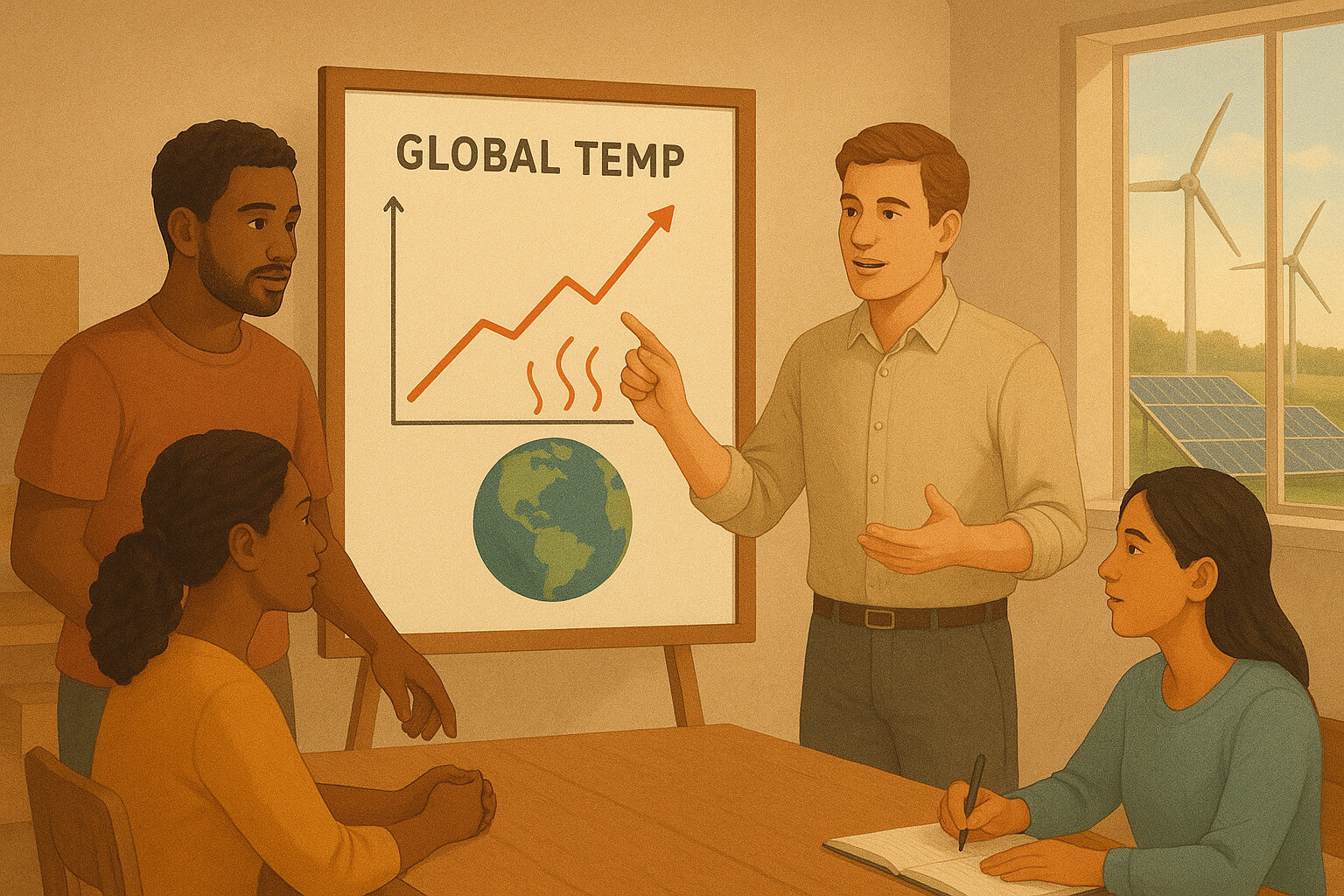September 04, 2025

Climate change is one of the most urgent challenges facing humanity today. It’s not just a distant environmental issue—it affects global health, economic stability, food security, and geopolitical peace. Yet despite a vast body of scientific evidence, myths and misinformation continue to muddy public understanding and hinder progress.
These misconceptions create confusion about what needs to be done, and by whom. They reduce accountability, delay policy action, and discourage individuals from participating in climate solutions. By confronting these myths head-on with scientific facts, we can build clarity, restore trust in science, and empower informed action from individuals, businesses, and governments alike.
It’s true that Earth’s climate has fluctuated over millennia due to natural factors such as volcanic activity, changes in solar radiation, and Earth’s orbital cycles. However, the current rate and scale of warming are not natural—they are driven overwhelmingly by human activity.
According to NASA and NOAA, the planet’s average surface temperature has increased by over 1.2°C (2.2°F) since the late 19th century. Most of this warming has occurred in the past 40 years, correlating with a sharp increase in greenhouse gas emissions following industrialization.
Ice core data show that current atmospheric CO₂ levels (over 420 ppm) are higher than at any point in at least 800,000 years.
Some skeptics argue there’s significant scientific disagreement, but this is a misrepresentation of the facts.
Misinformation spreads faster than corrections, especially on social media. That’s why public education and media literacy are critical. Resources like this climate education blog emphasize the role of schools, institutions, and media in bridging the knowledge gap.
Critics argue that wind and solar are unreliable or too expensive, suggesting fossil fuels are still necessary. This view is outdated and ignores massive technological progress.
The International Energy Agency (IEA) reported that in 2023, renewables made up nearly 30% of global electricity generation. This percentage is projected to rise as governments invest in cleaner infrastructure.
Complementary practices like composting and reducing landfill waste also play a role in emission reduction by cutting down methane from organic waste.
Some people feel powerless in the face of global-scale problems like climate change, assuming their actions are insignificant. This belief can be paralyzing.
Even daily consumer choices have ripple effects—like supporting sustainable seafood, as shown in discussions about bycatch and marine conservation.
A fatalistic attitude—that climate change is inevitable and irreversible—can lead to climate doomism, which is just as harmful as denial.
Technologies such as carbon capture, reforestation, and regenerative agriculture offer pathways to restoration, not just mitigation.
International cooperation—through agreements like the Paris Climate Accord—demonstrates that collective political will can drive meaningful change.
Debunking climate myths isn’t just about correcting the record—it’s about removing barriers to progress. When people understand the facts, they’re more likely to:
Education, community engagement, and transparent communication are powerful tools in the climate fight. By grounding our decisions in science, empathy, and collective responsibility, we can work toward a more resilient, livable planet for all.
“The future depends on what we do in the present.” — Mahatma Gandhi
Let’s act while we still can.
Stay up to date with the latest tips, expert insights, product reviews, and step-by-step guides to help you grow, create, and succeed—no matter your industry or passion.